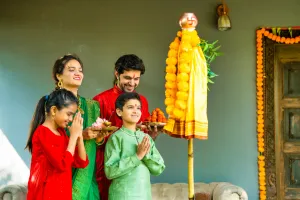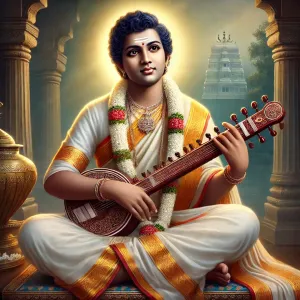Introduction
Ramcharitmanas, composed by the revered saint Tulsidas in the 16th century, is one of India's greatest literary and spiritual masterpieces. Written in Awadhi, a dialect of Hindi, this epic retelling of Valmiki’s Ramayana has immensely influenced Hindu culture, devotion, and philosophy. Often called the "living scripture," Ramcharitmanas has been recited, sung, and cherished by millions for centuries.
The Life and Times of Goswami Tulsidas

Goswami Tulsidas was a great saint, poet, and philosopher who lived in Varanasi during the 16th century. He is believed to be an incarnation of Sage Valmiki. Tulsidas composed Ramcharitmanas as a devotional scripture accessible to the common people, as Sanskrit texts were mostly limited to scholars and Brahmins. His work bridged the gap between divine wisdom and layperson understanding, making the virtues and teachings of Lord Ram available to all.
The Structure of Ramcharitmanas
The Ramcharitmanas is divided into seven Kands (cantos), each representing different phases of Lord Ram’s divine life. These sections parallel the structure of Valmiki’s Ramayan, but with variations in narrative and emphasis on devotion.
1. Bāl Kāṇḍ (Childhood Episode)

This section introduces the divine origins of Lord Ram and His purpose of incarnation on Earth. It begins with describing the birth of Lord Ram and His three brothers—Lakshman, Bharat, and Shatrughan—to King Dasharath and his queens. The episode also narrates the divine play of Lord Shiva and Parvati, the penance of Rishi Vishwamitra, and the breaking of Lord Shiva’s bow by Ram at King Janak’s court, leading to His marriage with Sita. The section emphasizes the divine nature of Ram’s birth and highlights devotion, surrender, and duty.
2. Ayodhyā Kāṇḍ (Ayodhya Episode)
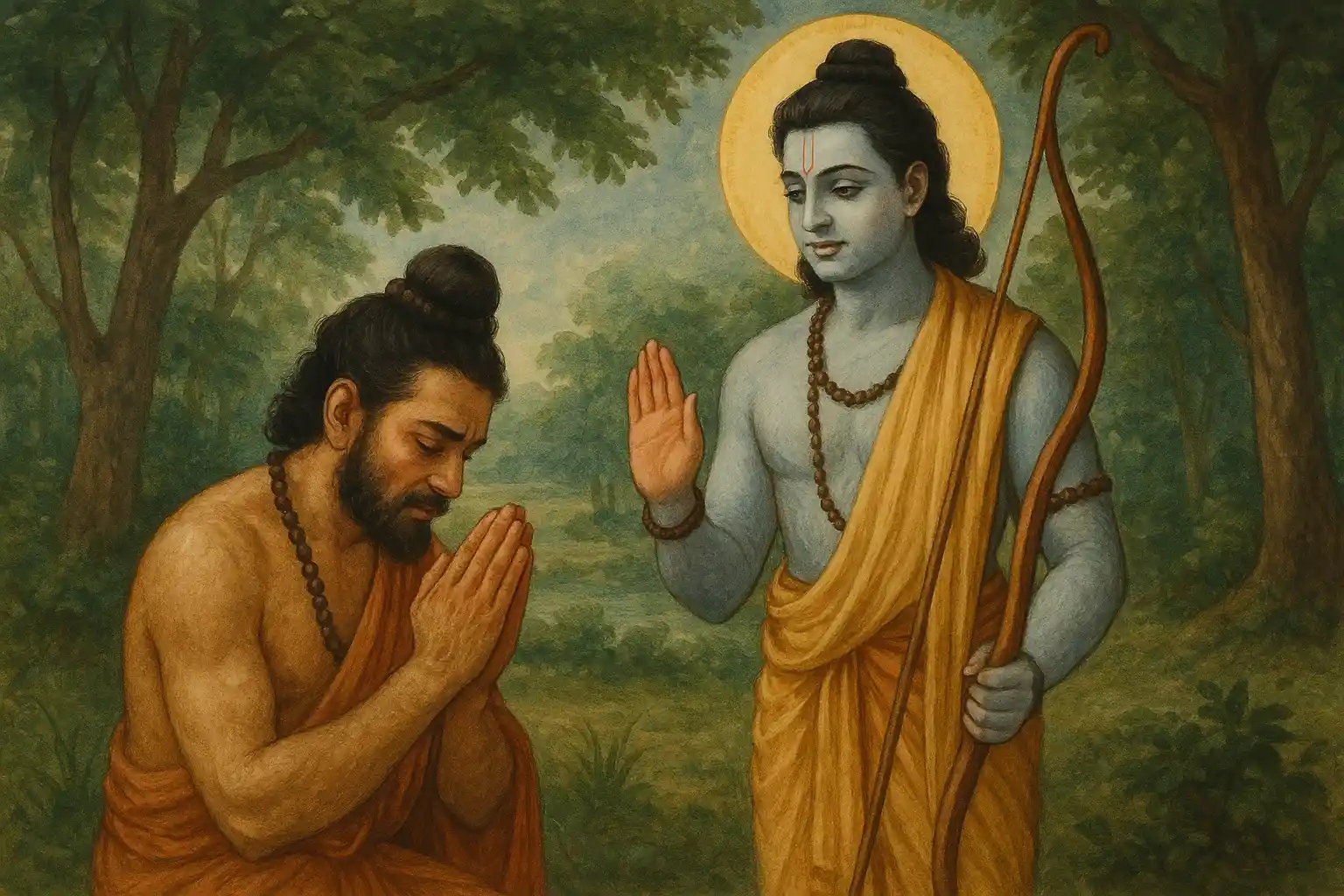
This section focuses on events leading to Lord Ram’s exile. King Dasharath, bound by a promise to Queen Kaikeyi, reluctantly orders Ram to leave Ayodhya for 14 years. The episode captures the anguish of Dasharath, the unwavering devotion of Bharat, and the acceptance of fate by Ram, Lakshman, and Sita. Bharat’s deep reverence for Ram is portrayed as he refuses to rule and instead places Ram’s sandals on the throne, governing as His representative. The section highlights themes of duty, sacrifice, and righteousness.
3. Araṇya Kāṇḍ (Forest Episode)
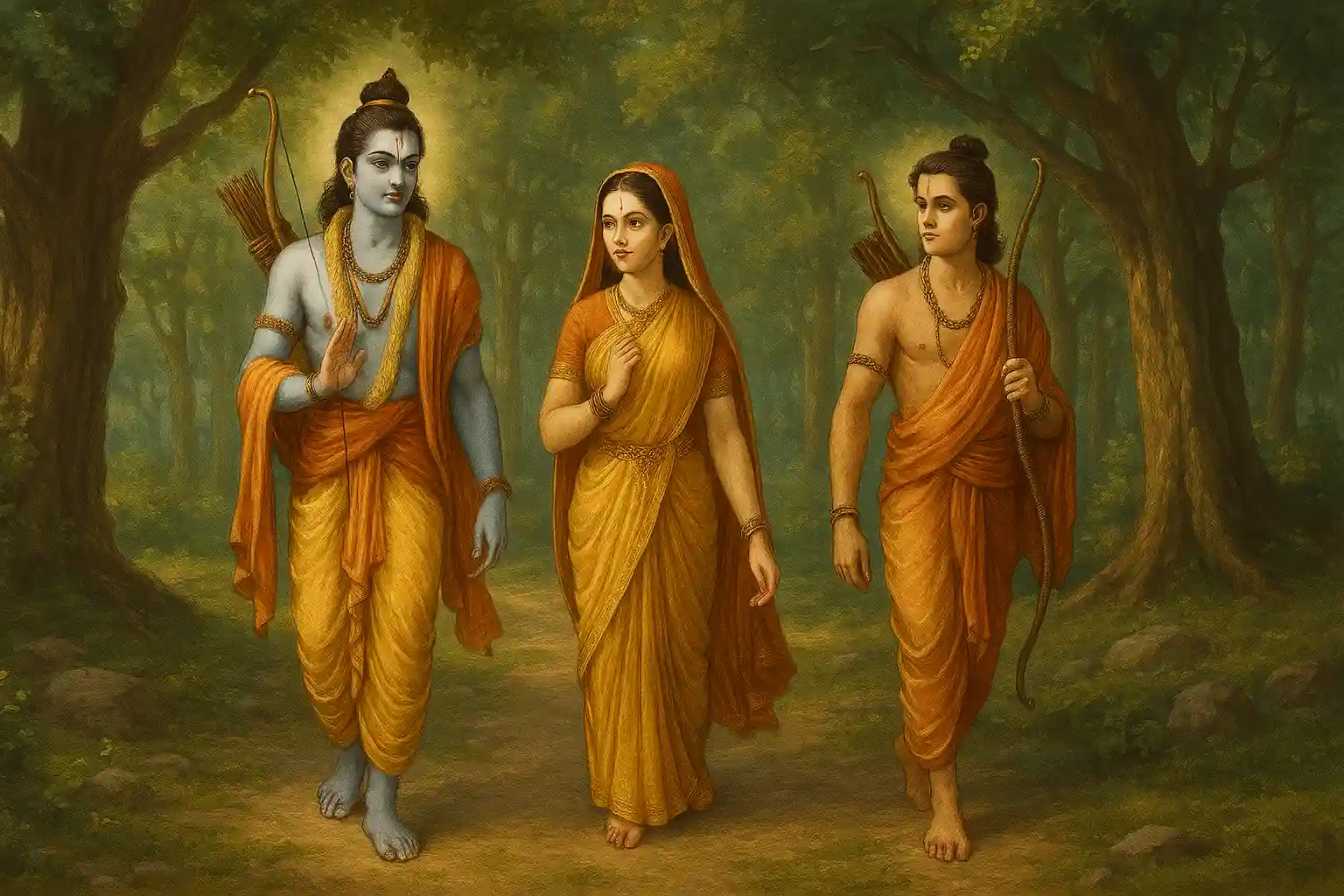
In this section, Ram, Sita, and Lakshman begin their lives in exile. They encounter various sages and demons along the way, including Surpanakha, Ravan's sister, whose insult leads to a series of events culminating in Sita’s abduction by Ravan. This episode describes the hardships of exile, the importance of self-control, and Sita's unwavering faith. It also introduces characters such as Jatayu, the noble vulture who sacrifices his life trying to save Sita from Ravan.
4. Kiśkindhā Kāṇḍ (Kishkindha Episode)

This section narrates Ram's meeting with Hanuman and Sugriva, the exiled monkey king of Kishkindha. Ram helps Sugriva reclaim his kingdom from his brother, Bali. In return, Sugriva promises to assist Ram in finding Sita. Hanuman’s devotion and intelligence shine in this section, as he emerges as the greatest devotee of Lord Ram. The episode emphasizes themes of friendship, loyalty, and dedication.
5. Sundar Kāṇḍ (Beautiful Episode)
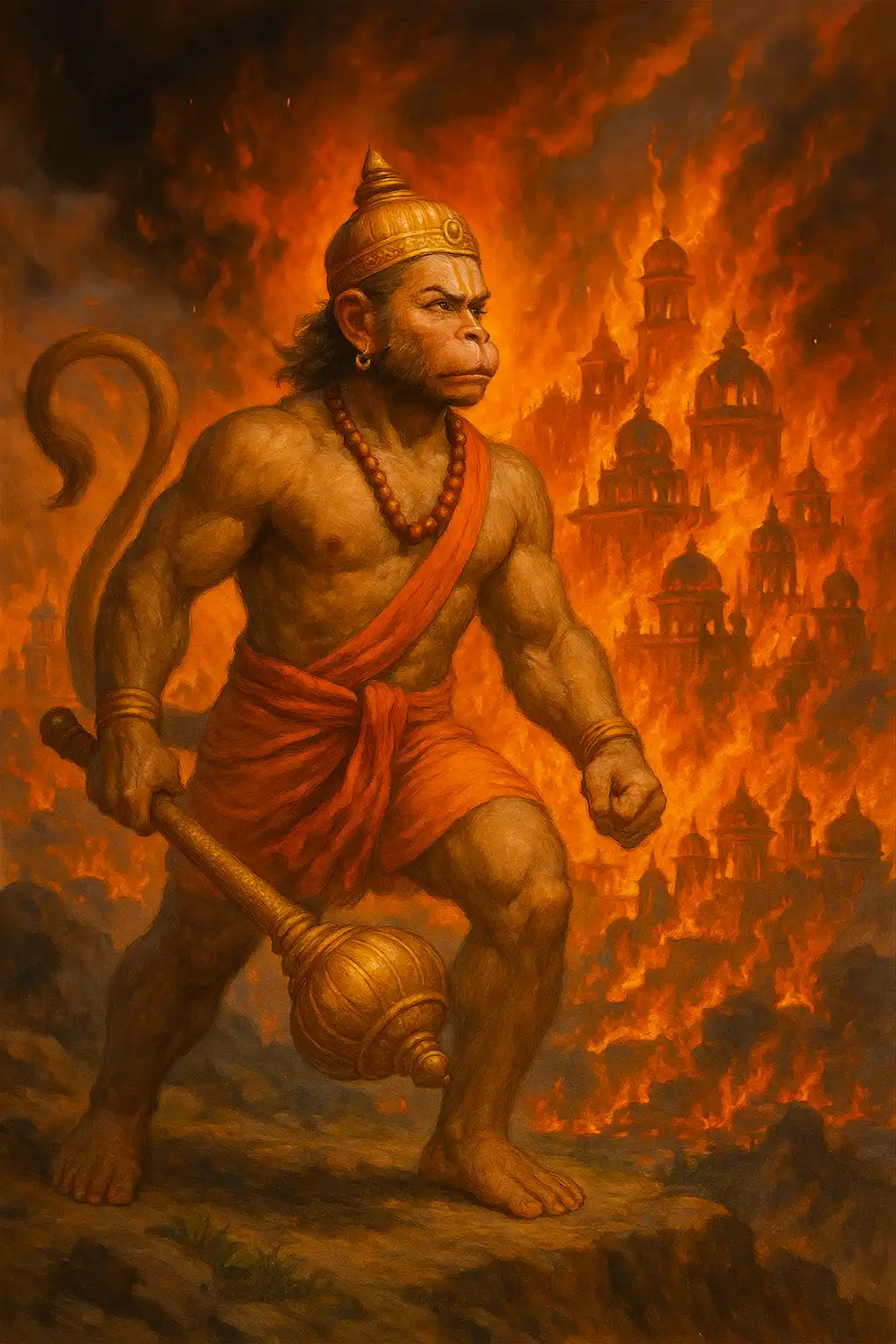
One of the most revered sections, Sundar Kand focuses on Hanuman’s journey to Lanka in search of Sita. He crosses the ocean, meets Sita in Ashok Vatika, and reassures her of Ram’s arrival. He also burns down parts of Lanka and proves his strength before Ravan. This episode highlights Hanuman’s unmatched devotion, courage, and strength. The recitation of Sundar Kand is considered highly auspicious and is believed to bring divine blessings.
6. Laṅkā Kāṇḍ (Lanka Episode)
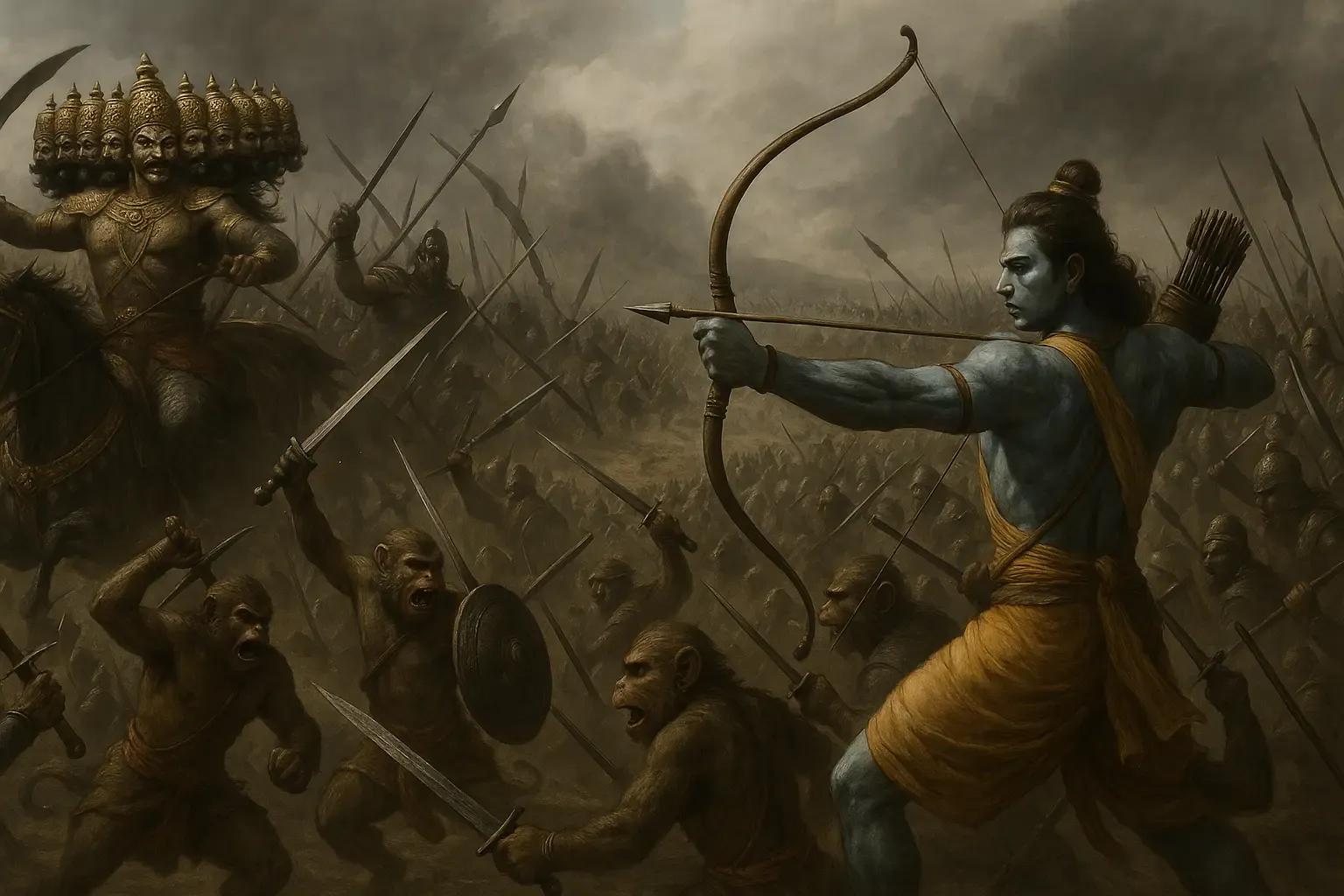
The Lanka Kand describes the great battle between Ram’s army and Ravan’s forces. Key events include the killing of Kumbhakarn, the sacrifice of Meghnath, and Ram's eventual slaying of Ravan. Sita is rescued, and Ram is victorious. The episode emphasizes the triumph of good over evil, the power of devotion, and the consequences of arrogance and unrighteousness.
7. Uttar Kāṇḍ (Concluding Episode)
This final section describes Ram’s return to Ayodhya, His coronation, and the establishment of Rama Rajya—a reign of peace, prosperity, and dharma. It also recounts the unfortunate episode of Sita’s exile, her trials, and her final departure from the earth. The episode concludes with Ram completing His earthly mission and returning to His divine abode. This section reinforces the impermanence of life and the ultimate reward of righteousness and devotion.
Themes and Spiritual Teachings
Devotion (Bhakti) as the Central Message
One of the most significant aspects of Ramcharitmanas is its emphasis on Bhakti (devotion). Tulsidas portrays Lord Ram as the Supreme God and the ideal son, husband, brother, and king. His unwavering dharma (righteousness) and compassion for all beings make Him an epitome of divine love.
Dharma and Righteousness
The epic underscores the importance of living a life based on righteousness (Dharma). Ram’s commitment to truth and duty, despite personal hardships, is an exemplary guide for human conduct.
The Power of the Name of Ram
Tulsidas strongly advocates chanting Lord Ram’s name as the simplest and most effective means of attaining liberation. The Ramcharitmanas frequently highlights the transformative power of Ram Naam (the name of Ram), which purifies the heart and soul.
The Role of Hanuman and Sita
Hanuman’s unparalleled devotion and selfless service make him a central figure in the epic. His unwavering faith, humility, and strength exemplify the ideal devotee. Similarly, Sita represents purity, resilience, and steadfast devotion to Ram, embodying feminine strength and grace.
Influence on Hindu Culture and Society
The impact of Ramcharitmanas on Hindu culture is profound. It has been instrumental in shaping religious beliefs, social norms, and ethical values across generations. Festivals like Ram Navami, Dussehra, and Diwali are deeply intertwined with the events described in this scripture.
Literary and Artistic Influence
Numerous folk songs, plays, and classical dance forms have been inspired by Ramcharitmanas. The tradition of Ramlila, the theatrical enactment of Ram’s life, continues to be performed in villages and cities, especially during Navaratri.
Moral and Ethical Guidance
The epic serves as a moral compass, offering guidance on how to lead a life based on truth, humility, and compassion. Many devotees turn to its verses for wisdom in distress and decision-making.
The Universal Appeal of Ramcharitmanas
Despite being a Hindu scripture, Ramcharitmanas conveys universal values of love, sacrifice, and righteousness. Its teachings resonate beyond religious boundaries, making it a revered text across different cultures and spiritual traditions.
Timeless Life Lessons from Ramcharitmanas
Here’s an expanded section on Life Lessons from Ramcharitmanas based on Swami Mukundananda’s teachings, incorporating the inspiring examples of Kak Bhushundi, Kevat, Hanumanji, Kaikeyi, Vibhishan, Shabari, and Bharat.
Life Lessons from Ramcharitmanas: Insights from Swami Mukundananda’s Teachings
1. Kak Bhushundi – The Power of Unwavering Devotion
Kak Bhushundi, a great devotee of Lord Ram, was a crow blessed with eternal devotion. Despite being cursed multiple times in his past lives, he never lost his love for the Lord. His story teaches us that pure devotion transcends all hardships.
Life Lessons from Kak Bhushundi’s Story:
✅ Acceptance of God’s Will – Kak Bhushundi never complained about his fate. He saw every challenge as God’s blessing.
- Example: Even when cursed to be a crow, he joyfully chanted Lord Ram’s name.
✅ Detachment from Material Identity – He transcended his body-consciousness and realized the soul's eternal nature.
- Example: Instead of lamenting his lowly form, he saw it as an opportunity to serve Lord Ram in his own way.
✅ Patience and Surrender – His devotion grew stronger with every trial, demonstrating the power of unshakable faith.
- Example: After multiple rebirths and hardships, he attained the divine vision of Lord Ram through sheer surrender.
2. Kevat – Humility and Selfless Service
Kevat, a simple boatman, refused to accept payment when ferrying Lord Ram across the Ganges. Instead, he considered it his greatest fortune to serve the Lord. His story is an embodiment of humility and pure devotion.
Life Lessons from Kevat’s Service:
✅ Service Without Expectation – True devotion is about serving without seeking rewards.
- Example: Kevat did not ask for gold or gifts; his only wish was to touch Lord Ram’s feet.
✅ Equality in Devotion – Devotion is not limited by social status or wealth.
- Example: A poor boatman’s devotion was as revered as that of great sages and kings.
✅ Faith in Divine Grace – Kevat had unwavering faith that his life would be fulfilled by serving the Lord.
- Example: He believed that touching Lord Ram’s feet would liberate him from the cycle of birth and death.
3. Hanumanji’s Heart Episode – The Ultimate Devotion
When questioned about his devotion, Hanuman tore open his chest to reveal that Lord Ram and Sita resided in his heart. This is one of the most powerful depictions of bhakti.
Life Lessons from Hanumanji’s Devotion:
✅ God Resides in a Devotee’s Heart – True devotion means surrendering one’s heart entirely to God.
- Example: Hanuman showed that his very existence was centered around Lord Ram.
✅ Selflessness in Bhakti – Devotion should be pure, without ego or expectations.
- Example: Hanuman never sought anything for himself; his only goal was to serve Lord Ram.
✅ Loyalty and Single-Minded Focus – No matter what happens, a devotee remains steadfast in faith.
- Example: Hanuman never allowed distractions or personal desires to come between him and his Lord.
4. Kaikeyi’s Sacrifice – The Misunderstood Devotee
Kaikeyi is often portrayed as the villain who sent Lord Ram into exile. However, Swami Mukundananda explains that Kaikeyi was divinely fulfilling Lord Ram’s mission on Earth.
Life Lessons from Kaikeyi’s Story:
✅ God’s Plan is Beyond Human Understanding – Sometimes, challenging circumstances are part of a greater divine plan.
- Example: Kaikeyi’s demand for exile ultimately led to the destruction of evil (Ravana) and spread Lord Ram’s glory.
✅ Even Negative Roles Can Serve a Higher Purpose – Every character in the divine play has a purpose, even if it appears hostile.
- Example: Just as Ravan's ego led to his downfall, Kaikeyi's demand facilitated the fulfillment of Lord Ram’s mission.
✅ Sacrifice for Dharma – True devotion sometimes requires making painful choices for the greater good.
- Example: Kaikeyi loved Ram dearly, yet her role in His exile ensured the ultimate victory of righteousness.
5. Vibhishan’s Sharanagati (Surrender) – Choosing Righteousness Over Family
Vibhishan, Ravan’s brother, abandoned his kingdom and sought refuge in Lord Ram, prioritizing dharma over family ties.
Life Lessons from Vibhishan’s Surrender:
✅ Truth and Righteousness Must Always Be Upheld – No matter what, one should always choose dharma over worldly attachments.
- Example: Vibhishan left Lanka despite knowing he would be ridiculed and disowned.
✅ God Accepts All Who Surrender – Lord Ram accepted Vibhishan despite his family background.
- Example: Lord Ram declared, "Whoever surrenders to Me, I shall grant them refuge, regardless of their past."
✅ Company of the Righteous Transforms One’s Life – Being in the company of noble souls uplifts our consciousness.
- Example: By surrendering to Ram, Vibhishan saved himself and played a key role in Ravan’s defeat.
6. Shabari’s Navadha Bhakti – Devotion in Simplicity
Shabari, an old tribal woman, was a devotee of Lord Ram. She followed the path of Navadha Bhakti (Ninefold Devotion), which made her worthy of the Lord’s darshan.
The Ninefold Devotion (Navadha Bhakti) and Life Lessons from Shabari:
✅ Shravan (Listening to God's Glories) – Hearing divine stories purifies the mind.
- Example: Shabari constantly listened to the sages speak about Lord Ram.
✅ Kirtan (Singing God’s Praises) – Chanting divine names increases devotion.
- Example: She would sing Ram’s name while doing her daily tasks.
✅ Smaran (Remembering God Constantly) – A devotee always keeps God in their thoughts.
- Example: Every moment of Shabari’s life was spent thinking about Ram’s arrival.
✅ Seva (Serving the Lord and His Devotees) – True bhakti is selfless service.
- Example: After tasting them first, she offered sweet berries to Ram to ensure they were ripe.
✅ Sakhyam (Seeing God as a Friend) – A devotee develops a personal relationship with God.
- Example: Shabari had such intimacy with Ram that she treated Him like her own son.
✅ Atma Nivedan (Complete Surrender) – The highest level of bhakti is giving oneself entirely to God.
- Example: Shabari had no worldly desires; her only wish was to serve Ram.
7. Bharat’s Devotion – Ideal Example of Selfless Love
Bharat’s unparalleled devotion to Lord Ram is an extraordinary example of pure love and selflessness. When given the throne, Bharat refused to rule in Ram’s absence and instead ruled Ayodhya as His representative by placing Ram’s sandals on the throne.
Life Lessons from Bharat’s Bhakti:
✅ Detachment from Power and Material Wealth – True happiness lies in serving God, not worldly possessions.
- Example: Bharat rejected the throne despite being the rightful king.
✅ Selfless Devotion is the Highest Form of Love – He loved Ram without expecting anything in return.
- Example: Bharat ruled only as a caretaker, waiting for Ram’s return.
✅ Renunciation and Inner Strength – He lived simply, wearing ascetic robes and practicing self-discipline.
- Example: He stayed outside Ayodhya in Nandigram instead of enjoying royal comforts.
Join Us for Ram Navami Celebrations at Radha Krishna Temple!
Celebrate this divine occasion with us at Radha Krishna Temple in Dallas! Experience vibrant cultural programs, divine rituals, and engaging activities for the whole family. Don’t miss the opportunity to immerse yourself in the joy and devotion of Ram Navami.
Register now and be a part of this spiritual journey!
Conclusion
The Ramcharitmanas is not just a religious scripture but a timeless spiritual guide that continues to inspire millions. Tulsidas’ poetic brilliance and profound philosophical insights make it a cherished treasure of Indian literature. Whether recited in temples, homes, or public gatherings, its divine verses bring solace, wisdom, and devotion to all who seek righteousness and love.
In a world of challenges, Ramcharitmanas's message of truth, devotion, and moral integrity remains as relevant as ever. One can cultivate inner peace, strength, and a deeper connection with the divine by imbibing its teachings.
Reference:
Ram Katha Lecture Series by Swami Mukundananda

